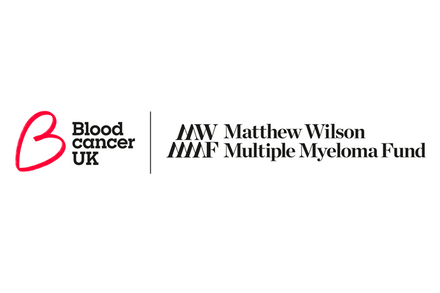Contact
- Kay Kendall Intermediate Fellow
Areas of Research
Epigenetic regulation of myeloma
Multiple myeloma is in many ways a disease driven by inappropriate gene expression. It is characterised by the aberrant activation of gene regulatory elements known as enhancers, stimulating the upregulation of key oncogenes. Blocking this behaviour is therefore a promising strategy for myeloma treatment, and many therapeutic strategies directly or indirectly target gene regulatory pathways.
The lab studies the epigenetic regulation of gene expression, focused on the way these processes are dysregulated in multiple myeloma. We have a particular interest in understanding the role of oncogenic enhancer activity in driving myeloma-specific transcriptional profiles, and identifying the factors responsible for this behaviour. A major goal of the lab is to identify potential therapeutic targets that could be developed as novel therapies for multiple myeloma.
We use a variety of high-throughput genomics techniques to study the chromatin landscape, including ChIP-seq, ATAC-seq and RNA-seq. We have optimised TOPmentation, a small cell-number technique that allows us to characterise the chromatin profile of myeloma patient samples. In addition, we use the 3C technology Micro-Capture-C to map the physical association of enhancers and promoters. By combining these techniques with genetic and pharmacological manipulation of myeloma cell lines, we are able to explore mechanistically enhancer function and regulation.
Mechanisms of myeloma drug resistance
Relapse is very common in myeloma after initial treatment. Patients typically enter remission following treatment, but invariably relapse, often with resistance to one or more of these drugs. There is therefore a pressing need to understand the mechanisms that drive this resistance to find ways to counteract it. We are working to identify and understand epigenetic mechanisms that drive drug resistance via changes in gene expression, which therefore may be reversed to resensitise cells to therapy.
Our team
Nick Crump (he/him)
/prod01/channel_3/media/images/square-2000X2000/Nick-profile-photo.jpg)
Nick Crump (he/him)
Kay Kendall Leukaemia Fund Intermediate Fellow
Dr Katrina Fordwor (she/her)
/prod01/channel_3/media/images/square-2000X2000/41627445-57d5-4ba9-bc94-73fb0fd536c3.jpeg)
Dr Katrina Fordwor (she/her)
Clinical Research Fellow
Jinglin Zhou (he/him)
/prod01/channel_3/media/images/square-2000X2000/Jinglin-profile-photo.jpg)
Jinglin Zhou (he/him)
PhD student
Jason Taslim (he/him)
/prod01/channel_3/media/images/square-2000X2000/Jason-profile-photo.jpg)
Jason Taslim (he/him)
Research assistant
Sophie Ball (she/her)
/prod01/channel_3/media/images/square-2000X2000/Sophie-profile-photo.jpg)
Sophie Ball (she/her)
PhD student
Funders
Research Publications
Results
- Showing results for:
- Reset all filters
Search results
-
Journal articleCross JW, Field LM, Smith A, et al., 2025,
PROM1/CD133 MARKS A PROLIFERATIVE STEM CELL LIKE POPULATION OF BLASTS IN KMT2A REARRANGED INFANT ALL
, Blood Advances, ISSN: 2473-9529 -
Journal articleCrump NT, Milne TA, 2025,
Is enhancer function driven by protein–protein Interactions? From bacteria to leukemia
, BioEssays, Vol: 47, ISSN: 0265-9247The precise regulation of the transcription of genes is essential for normal development and for the maintenance of life. Aberrant gene expression changes drive many human diseases. Despite this, we still do not completely understand how precise gene regulation is controlled in living systems. Enhancers are key regulatory elements that enable cells to specifically activate genes in response to environmental cues, or in a stage or tissue-specific manner. Any model of enhancer activity needs to answer two main questions: (1) how enhancers are able to identify and act on specific genes and (2) how enhancers influence transcription. To address these points, we first outline some of the basic principles that can be established from simpler prokaryotic systems, then discuss recent work on aberrant enhancer activity in leukemia. We argue that highly specific protein–protein interactions are a key driver of enhancer-promoter proximity, allowing enhancer-bound factors to directly act on RNA polymerase and activate transcription.
-
Journal articlePark KC, Crump NT, Louwman N, et al., 2023,
Disrupted propionate metabolism evokes transcriptional changes in the heart by increasing histone acetylation and propionylation
, Nature Cardiovascular Research, Vol: 2, Pages: 1221-1245, ISSN: 2731-0590Propiogenic substrates and gut bacteria produce propionate, a post-translational protein modifier. In this study, we used a mouse model of propionic acidaemia (PA) to study how disturbances to propionate metabolism result in histone modifications and changes to gene expression that affect cardiac function. Plasma propionate surrogates were raised in PA mice, but female hearts manifested more profound changes in acyl-CoAs, histone propionylation and acetylation, and transcription. These resulted in moderate diastolic dysfunction with raised diastolic Ca2+, expanded end-systolic ventricular volume and reduced stroke volume. Propionate was traced to histone H3 propionylation and caused increased acetylation genome-wide, including at promoters of Pde9a and Mme, genes related to contractile dysfunction through downscaled cGMP signaling. The less severe phenotype in male hearts correlated with β-alanine buildup. Raising β-alanine in cultured myocytes treated with propionate reduced propionyl-CoA levels, indicating a mechanistic relationship. Thus, we linked perturbed propionate metabolism to epigenetic changes that impact cardiac function.
-
Conference paperLee Y, Bladt F, Leonardos D, et al., 2023,
Immune graft composition is important for deepening response and outcome after autologous stem cell transplantation in patients with multiple myeloma who do not receive maintenance therapy
, 65th Annual Meeting of the American-Society-of-Hematology (ASH), Publisher: American Society of Hematology (ASH Publications), ISSN: 0006-4971 -
Conference paperLau J, Harman JR, Jackson NE, et al., 2023,
Sustained MYB activity Is necessary for oncogenic transcription in KMT2A-rearranged acute lymphoblastic leukemia through enhancer-promoter interactions and epigenetic modifications at enhancers
, 65th Annual Meeting of the American-Society-of-Hematology (ASH), Publisher: American Society of Hematology (ASH Publications), ISSN: 0006-4971
This data is extracted from the Web of Science and reproduced under a licence from Thomson Reuters. You may not copy or re-distribute this data in whole or in part without the written consent of the Science business of Thomson Reuters.




